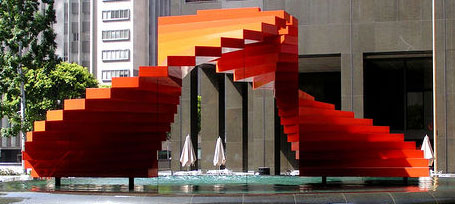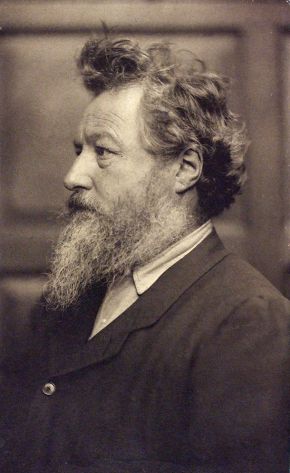
Before moving to the United States, he spent time as the Art Director of Vogue magazine's Berlin office ("HERBERT BAYER). One of Bayer's many contributions at this point in time was a typeface called "Universal".

Bayer, 1925, "universal typeface"
In 1938 when he first moved to the United States, he created an exhibit called "Bauhaus 1919-1928" at the New York Museum of Modern Art ("Herbert Bayer, Art Directory"). He represented a number of important exhibitions including Fantastic Art, Dada, Surrealism,and Art and Advertising Art ("About this artist: Herbert Bayer").

In 1946 Bayer moved to Colorado where he designed for a local architecture and posters for the local community ("HERBERT BAYER"). In 1959, Bayer designed another sans-serif typeface called "fonetik alfabet", which contained special characters for the endings -ed, -ion, -ory, and -ing ("HERBERT BAYER").
 :
:Bayer, "Bauhaus poster forKandinsky",1926
For several companies Bayer worked as an artistic consultant for including, "Container Corporation of America" and "Atlantic Richfield Company". At this time he was also a design consultant for the Aspen cultural center. Bayer oversaw the acquisitions from within Arco Plaza, the newly-built twin 51 story office towers in Los Angeles.

Bayer, "Double Ascension", 1973
He also worked for the Container Corporation of America (CCA) in Chicago from 1945-1956 as consultant designer and then as chairman of the Department of Design from 1956-1965 ("About this Artist: Herbert Bayer"). He designed and edited the World Geographic Atlas for the CCA between 1948-1953 and was art and design consultant for the Atlantic Richfield Company in 1966.
Bayer, World Geographic Atlas. A Composite of Man's Environment, 1953.
In 1976, Herbert Bayer moved to Montecito, California. By this time Bayer began to exhibit more of an interest in painting (About this Artist: Herbert Bayer). In his paintings combined geometric and organic abstract forms. An example of this style is through his works like Colorado as seen below.
Bayer, Colorado, 1948.
Continuing with his painting, Bayer uses geometric forms of spheres and cones that appeared frequently and were used in designs for the environment like the structure displayed below called Anaconda.

Bayer, "Anaconda", a marble fountain
Reference:
"About this artist: Herbert Bayer". 2014. Oxford University Press.
"The Bauhaus, 1919-1933". 2013. Heilbrunn Timeline of Art History. The Metropolitan Museum of Art.
"Herbert Bayer". 2013. Graphic Design Archive Online. RIT Libraries.
"HERBERT BAYER" 2012. RIT Design Archives. RIT Libraries.
"Herbert Bayer". 2011. Art Directory.








